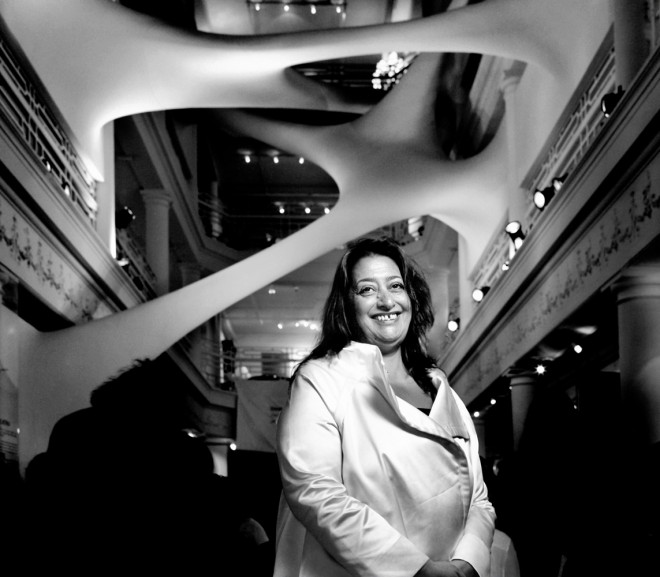 Zaha Hadid, the first female architect (and first Muslim) to win the prestigious Pritzker Prize, died yesterday in a Miami hospital after suffering a heart attack while being treated for bronchitis. The Iraqi-born mathematician and architect whose designs were both celebrated and divisive, was 65 years old.
Zaha Hadid, the first female architect (and first Muslim) to win the prestigious Pritzker Prize, died yesterday in a Miami hospital after suffering a heart attack while being treated for bronchitis. The Iraqi-born mathematician and architect whose designs were both celebrated and divisive, was 65 years old.
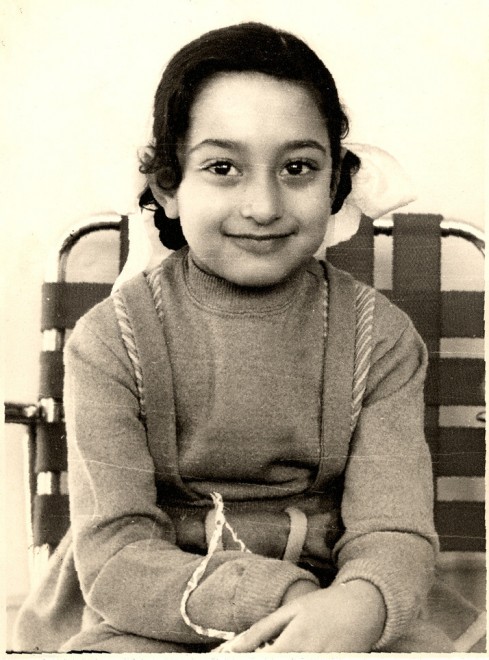 She was born in Baghdad in 1950 to an affluent family who strongly encouraged her educational and career ambitions. After graduating from the American University of Beirut with a degree in mathematics, she moved to London to attend the Architectural Association School of Architecture (AA). A job offer from one of her former AA professors, architect and design theorist Rem Koolhaas, brought her to Rotterdam in 1976. A year later, she made partner in his groundbreaking firm, the Office for Metropolitan Architecture.
She was born in Baghdad in 1950 to an affluent family who strongly encouraged her educational and career ambitions. After graduating from the American University of Beirut with a degree in mathematics, she moved to London to attend the Architectural Association School of Architecture (AA). A job offer from one of her former AA professors, architect and design theorist Rem Koolhaas, brought her to Rotterdam in 1976. A year later, she made partner in his groundbreaking firm, the Office for Metropolitan Architecture.
In 1983, she won an international design competition for a leisure center in Hong Kong. Her entry, entitled The Peak (shown below), earned her £100,000 in prize money which she used to establish her own studio in London. The Peak presaged two aspects of her career: her aversion to rigid geometrical symmetry is clearly evident and, as would turn out with most of her designs, this project would never be built.
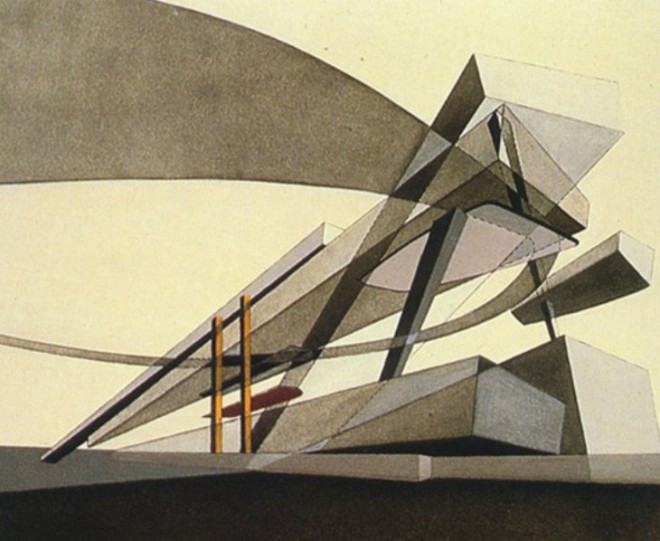
Arriving in London, she undertook commissions for interior design, as example creating the stage set for the 1999-2000 “Nightlife” world tour of British electropop duo The Pet Shop Boys. It was around this time that she became inexplicably famous, despite not actually building anything. Her outsize reputation was inflated by influential admirers who viewed her exploration of atypical building materials and her wholesale rejection of traditional form as a refreshing repudiation of the design status quo. In 2004, when she was awarded the Pritzker Prize – considered the “Nobel prize of architecture” – the jury praised her persistent defiance of convention.
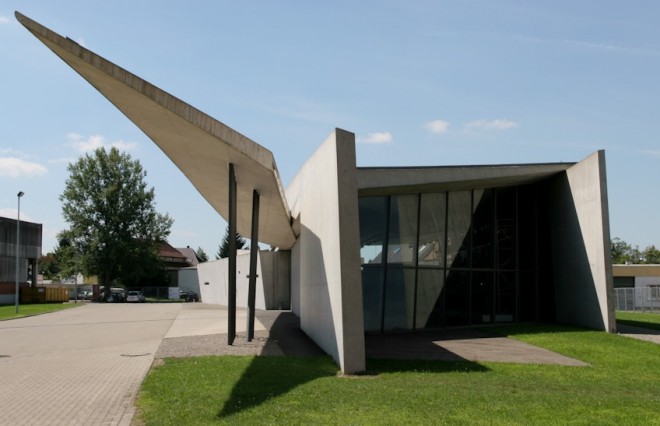
Her first constructed project happened in 1993, a jewel-box of a fire station on the campus of a Swiss-German furniture factory. According to Stephen Bayley, writing for The Spectator, it’s “shrieking concrete angles and disruptive interiors photographed very well and were dutifully recorded in the magazines, but were not much liked by the firemen. It was decommissioned and is now an exhibition center.” See image above.
 She went on to design bold, beautiful and controversial buildings around the world with a burgeoning list of Middle East clients. Projects planned and underway include the soaring Central Bank of Iraq in Baghdad (above), the Abu Dhabi Performing Arts Center on Saadiyat Island (below), and the Riyadh Metro Station. Other uncompleted works include one of the stadiums for the 2022 World Cup in Qatar and a new Iraqi parliament building in Baghdad.
She went on to design bold, beautiful and controversial buildings around the world with a burgeoning list of Middle East clients. Projects planned and underway include the soaring Central Bank of Iraq in Baghdad (above), the Abu Dhabi Performing Arts Center on Saadiyat Island (below), and the Riyadh Metro Station. Other uncompleted works include one of the stadiums for the 2022 World Cup in Qatar and a new Iraqi parliament building in Baghdad.

Hadid deftly juggled dual roles in the industry, retaining international “starchitect” status while also enjoying cache as an industry outsider. “My work is not within the accepted box,” she said in an interview with HuffPost. “Maybe because I am a woman. Also an Arab. There was a certain prejudice about these things.”
As with her A-list peers, such as Frank Gehry and Santiago Calatrava, her style was more about personal vision than public utility. The engineering required to stabilize her fantabulous forms was complex, and she acknowledged that some of her early plans had posed structural challenges. “I used to like buildings floating,” Hadid told the BBC, “Now I know that they can’t float.”
Add in her penchant for novel building materials, and the result was difficult-to-construct projects that often dramatically blew budgets. She showed a chronic aversion to local context, and no moral conscience when it came to environmental issues, or the health and safety protection for people who brought her designs to reality. Apparently her clients did not find this problematic.

Architects solve design problems, and often apply their particular aesthetics to everyday items that are accessible to a broader consumer base than, say, a new home or museum. Like Gehry, she cashed in on her rising “brand” by lending her design sense to jewelry, furniture, super-yachts (above), and cars. Hadid became a prolific product designer, creating swimsuits, utensils, and footwear (below). It’s good business, and maybe it’s good design, but it’s not architecture.
Kudos to her firm for progressing development and increased application of computer-aided design, and for exhaustive experimentation in pushing the limits of glass and steel and carbon-fiber building components. Her ascension to the podium with the architectural ‘greats’ has been inspirational to women in every aspect of the design/build industry.
But is her work truly architecture? Or is it sculpture writ large, with a dollop of fashion and show-biz?

Sometime in the past century architecture veered off its place among the traditional Fine Arts, becoming less about manipulating form to maximize user experience and more about manipulating form, well, because you could.
The architectural experience became less about the flow of an individual through light and space over time, and more about the malleability of new-age materials to create fluidly sensual surfaces. Architecture is the most functional of the arts. It must serve its purpose, its beauty demands to go deeper than its skin. Her ability to devise new ways to manipulate form is arguably more akin to sculpture than to the design of inhabitable, fit for purpose space.
Yesterday her office released a press statement declaring her “the greatest female architect in the world”. What’s irrefutable is that Hadid incited debate, about what is good design, and what is architecture. She rose to the ranks of the world’s most iconic architects, riding on the smooth, curvaceous backs of her neo-futuristic designs.
Details have not been released about a memorial service, but those wishing to leave condolence messages are invited to send them to [email protected]. Godspeed, Dame Hadid.

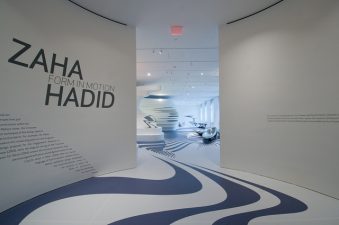
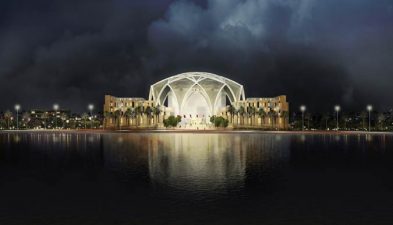

One thought on “Iraqi-born architect Zaha Hadid dead at 65”
Comments are closed.